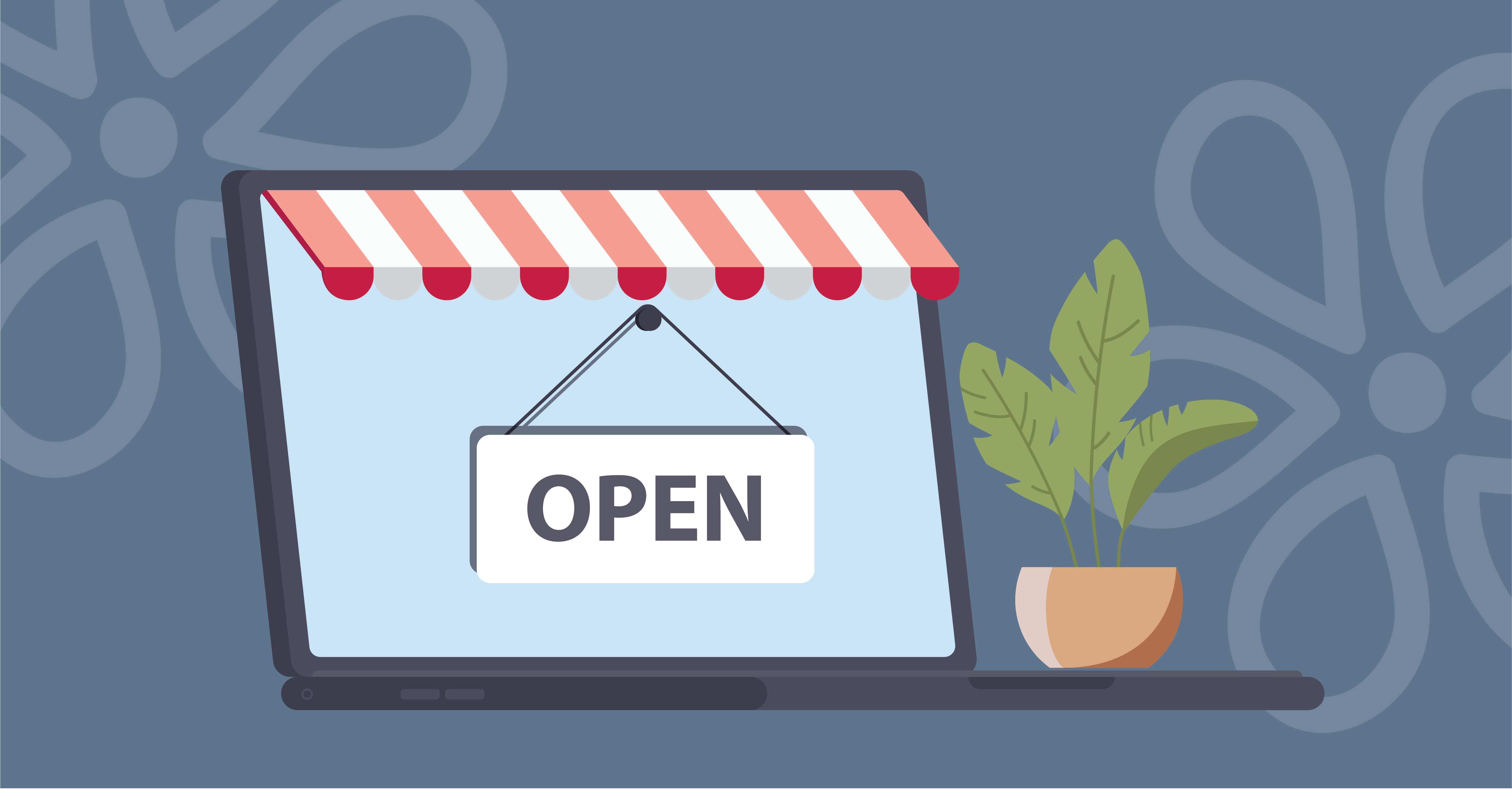What Is Social Commerce and Shoppable Content?
Social Commerce? Shoppable Content? These terms may have not existed 20 years ago, but they are here and more powerful than you know. With the emergence of social media in the early-2000s, social commerce has gained momentum, enough to convince Accenture (NYSE:ACN) that it will grow three times as fast as traditional ecommerce to the tune of $1.2 trillion by 2025. Fueled by the Coronavirus pandemic, social media platforms have now matured enough to allow retailers to move from top-of-funnel engagement to bottom funnel purchase points.
Social Commerce Defined
For simplicity’s sake, social commerce can be defined as the conversion point between social media and online shopping. Social commerce brings together retailers and customers, all powered by a social media platform (i.e. Facebook, Instagram, TikTok, etc.). Typically, in social commerce, you’ll find products featured in a photo or video, linked to that retailer’s online store or website. Meta has led in this field by finding innovative ways to integrate shoppable content features into the Facebook and Instagram platforms. Some social networks are even starting to become social commerce platforms. Integrations with online retail platforms like Shopify and WooCommerce have made this even easier. The end game? Get people to click the “buy button” and hit the checkout as efficiently as possible.
The Rise of Social Commerce & Shoppable Content
Maturation of social media platforms has given rise to social commerce. What first began as a way to stay in touch with friends and family, social media platforms like Instagram and Facebook, along with newcomers like TikTok and Pinterest, have transformed into ecommerce giants. New online shopping experiences like Facebook Shops, Instagram Shopping, and social storefronts have created a market that converges physical items with virtual stores. The key point: messaging is crucial in social commerce. You need to set your brand apart from the crowd.
With the explosion of social shopping, a new digital marketing niche has taken hold: influencer marketing. Influencer marketing has become a booming industry, specifically for Gen Z. By leveraging a celebrity or social media user with a large following, brands can pinpoint users in their target market and position their products with unprecedented clarity. Later, you’ll read exactly how uncovering and employing the appropriate influencer marketing for your brand is a key strategy tool.
How First Media Approaches Shoppable Social Commerce
First Media’s brands, So Yummy, Blossom, and Blusher, take content that fans are already engaging with and drive them to take action by making all content 100% shoppable. This new social commerce experience is accessible where potential customers already are – on TV, social media and even out-of-home – without any additional steps, hoops, or downloads. It’s never been easier to take your standard social media marketing to new, shoppable heights.
First Media’s Social Media Marketing Customer Journey
Potential customers are driven to the purchase point through a seamless customer experience, one of three ways: through So Yummy’s shoppable partnership with Walmart, through any online retailer, or through a brand’s ecommerce site. To highlight the journey, we’ll follow a customer as they interact with So Yummy! and the Walmart path to purchase :
- Organic Social Feed – customers land on a So Yummy social media post organically.
- Shoppable Ads – Retarget those who engaged with the organic content with CTA specific shoppable ads.
- So Yummy Shoppable Website – through clickable links or “shop now” buttons, the customer is then taken to the So Yummy website, which correlates to the social media post, where every item needed to recreate the recipe or hack can be added to your shopping cart in just one click.
- Walmart Shopping Cart – from there, the customer lands on the Walmart ecommerce site where all items are in their cart thanks to an exclusive API connectivity between So Yummy and Walmart.
A similar journey for lifestyle related content would be experienced through our Blossom brand, or Blusher for makeup and beauty content.
The Omni-Channel Approach in ECommerce
Omni-channel marketing is designed with one goal in mind: find your potential customers and guide them down the sales funnel. The thing is, your potential customers can be encountered in a variety of different formats, and that’s where First Media excels.
First Media Omni-Channel Distribution
Social Media Platforms
Marketing audiences have grown exponentially on social media platforms. While the focus used to be on Meta’s platforms, Facebook and Instagram, the social media universe has boomed to include Pinterest, YouTube, Snapchat, Twitter, and TikTok. All platforms are ripe for optimization via a social commerce strategy. First Media has the tech to back up your future-focused social media vision. Our three-pronged technology approach utilizes social media platform data in ways you’ve never seen:
CRAIG (Creative AI Generator) – generate business insights and creative recommendations through our A.I. technology.
SAMBA (Smart Automated Media Buy Algorithm) – optimize campaign’s CPA targets at scale, based on automated optimizable rules.
CAT (Comments Analysis Tool) – automatically analyze thousands of comments and their sentiment, bringing a better experience to your potential customers.
Television
While traditional commercial advertising used to be king, the television marketing channel has grown to include cord-cutters. From First Media’s Babyfirst TV to So Yummy TV, there are no limits to reaching your target demographics. Your content can be featured on a wide variety of platforms, encouraging product discovery and purchase decisions:
- Apple TV
- Android TV
- Samsung Smart TV
- Dish Network
- Fire TV (Amazon)
- Xumo
- DirectTV
- Verizon Fios
- Plex
- Sling
- Roku
- Suddenlink
- Redbox
- Xfinity
Out-of-Home Marketing
In an era of internet marketing, traditional, out-of-home (OOH) marketing is often overlooked. Advertising out of the home continues to be one of the best ways to increase brand awareness, and reach your target demographics. With the potential of 64 billion monthly impressions, this channel has the capability to target those top-of-funnel customers, sometimes better than social networks can.
- Malls
- 80 million+ unique monthly visitors
- 1 billion+ monthly impressions
- Over 10,000 screens
- Elevators
- 141 million+ impressions
- 46,000+ screens
- Restaurants
- 600 million+ monthly impressions
- 10,000+ locations
- Subways
- 500k+ displays
- 16.6 billion weekly impressions
- 70k+ U.S. market
- Gas Stations
- 3 billion+ displays
- 92 million+ monthly impressions
- 10,000+ screens
- Lobbies
- 50k+ videos managed
- 20 million+ views monthly
Advancements in OOH marketing techniques have even made content in this channel shoppable. Recently, So Yummy created an ad campaign targeting NYC subway riders that embedded QR codes, and similar technology, in print and video ads. By scanning the QR codes, potential customers could immediately shop for new products and ingredients they saw in the advertising. With this type of technology, OOH marketing not only drives awareness, it can also drive traffic to immediate ecommerce sales or to a web-based product catalog.
Social Commerce and Shoppable Content: Wrapped
No matter your thoughts or feelings on social media, the marketing potential and customer reach cannot be understated. One thing to remember in all of this is the importance of high-value content that potential customers will interact with and consume. Long gone are the days of utilizing social media sites for brand awareness. New technological developments and ecommerce platforms have taken traditional marketing and turned it on its head. Whether your online shopping audience is boomers or millennials, there is a social commerce niche for your brand.
Discovering the advantages that shoppable content and social commerce sites can offer is a crucial step in refining your marketing ability. And, aligning technology with human-powered marketing is an especially valuable option that can give you added momentum. Though the process does not stop and start on the internet, it’s well known that social media marketing is mutating into a universal marketing space. Before pushing back against any preconceived notions, challenge yourself to consider the value of influencer marketing, and how a deeper dive into social publishing can move you forward, as you’ll see next.





